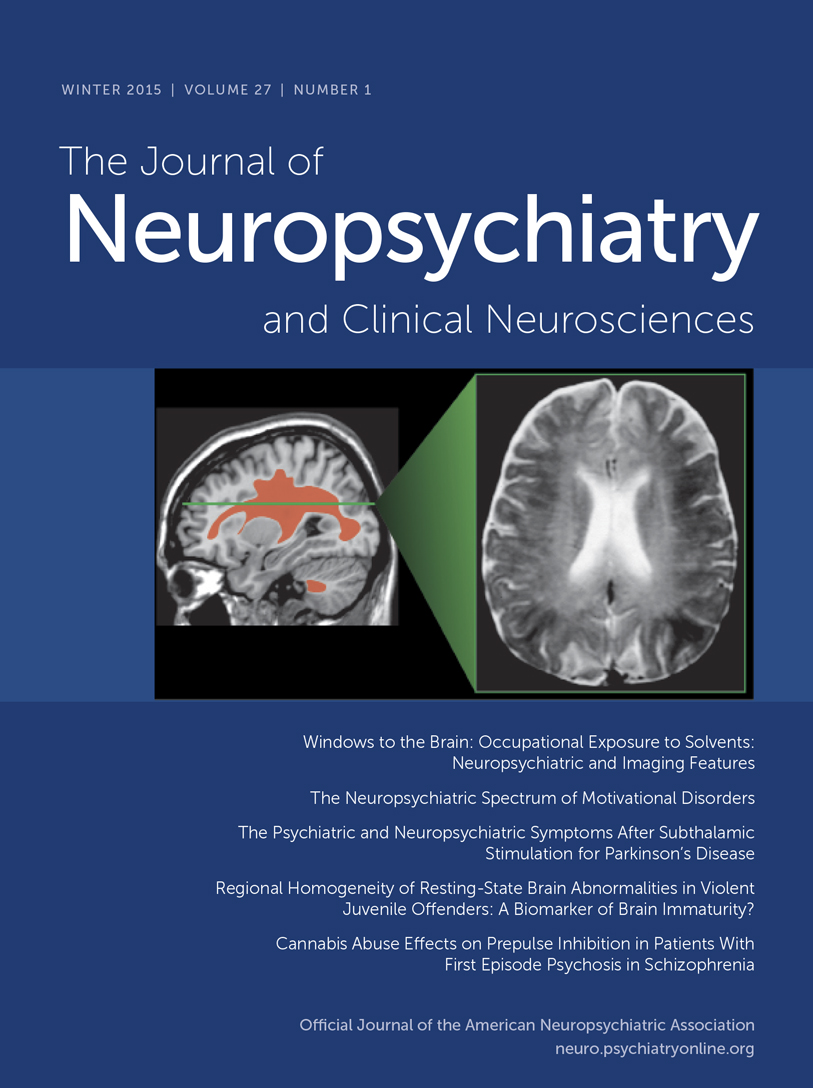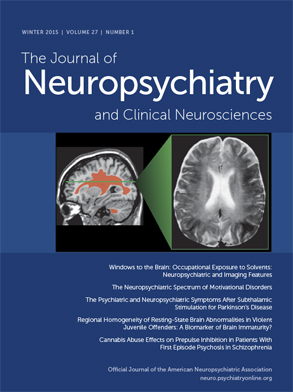Schizophrenia is one of the top 10 leading causes of disability-adjusted life-years.
1 Even with all options currently available, up to 60% of patients do not respond properly to treatment and are classified as refractory cases. Clozapine has been considered as the best choice to treat these patients. However, approximately 30% of them do not respond to clozapine either and are known as patients with clozapine-resistant schizophrenia.
2Here we report two cases of refractory schizophrenia and two cases of clozapine-resistant schizophrenia successful treated with paliperidone palmitate, a long-acting injection antipsychotic (
Table 1). Schizophrenia diagnosis was based on DSM-IV criteria and refractory schizophrenia was defined according to the criteria proposed by Kane et al.
3 Two of the patients were regularly followed in our outpatient schizophrenia clinics at the Clinic Hospital of Ribeirão Preto Medical School, in the city of Ribeirão Preto, São Paulo, Brazil, and the other two at the outpatient schizophrenia clinics at the University of Rio Grande do Norte, in the city of Natal, RN, Brazil. These cases were studied during the same period, from the first quarter of 2012 to the second quarter of 2013.
Case Reports
“Patient A,” a 19-year-old woman, had already been admitted to psychiatric wards two times in the last year. She had been taking olanzapine 20 mg/day for 3 months, but her psychotic symptoms persisted. She also had been treated with haloperidol and risperidone before, both at appropriate doses and for more than 4 weeks without clinical response. Therefore, we tried clozapine, and after 4 months of 400 mg/day clozapine use, her clinical response was much the same as with the other antipsychotics, and she was characterized as clozapine resistant. Our choice was then to switch from clozapine to paliperidone palmitate. Two months after paliperidone palmitate 75 mg/month was started, the patient presented significant improvement of delusions and hallucinations. She went back to school, met old friends from whom she had been apart for several years, and attended the wedding party of her cousin.
“Patient B,” a 26-year-old man, diagnosed with schizophrenia 6 years before, was admitted to our inpatient unit presenting with religious delusions and auditory hallucinations. He believed he was God and had been locked at home alone for a few weeks before the evaluation. Initially, he developed neuroleptic malignant syndrome after 5 mg/day of haloperidol. Later, olanzapine 20 mg/day and quetiapine 800 mg/day were tried, for a period of 6 weeks each, without any improvement of symptoms. The patient presented seizures after 4 months of clozapine 600 mg/day. Therefore, 1000 mg/day of valproic acid was added to the clozapine. One month later, risperidone 2 mg/day was added because his psychotic symptoms still remained. He had a good response to this drug combination and was discharged. However, after 2 weeks, the patient stopped taking his medications and was readmitted to our ward due to a new psychotic episode. Therefore, paliperidone palmitate 75 mg/month was prescribed and resulted in partial improvement of his symptoms. The patient is now doing well with no psychotic symptoms since the last adjustment of the paliperidone palmitate dose to 100 mg/month.
“Patient C,” a 19-year-old man, presented with his first psychotic episode after marijuana use 4 years ago. He was admitted to our inpatient unit presenting with disorganized behavior, inappropriate affect, persecutory and somatic delusions, and auditory and visual hallucinations. He developed dystonia after haloperidol 5 mg/day and parkinsonism after risperidone 4 mg/day. Olanzapine 20 mg/day, quetiapine 800 mg/day, and aripiprazole 30 mg/day were not effective (after at least 4 weeks in each trial). After paliperidone palmitate up to 150 mg/month, the symptomatology described above remitted. Twelve months later, the patient was much better, without new hospitalizations and practicing sports daily.
“Patient D,” a 33-year-old man, presented with social withdrawal at the age of 14, with “strange ideas and altered behavior.” His treatment was started 6 years later with haloperidol 5 mg/day. His first hospitalization occurred 6 years ago, when he became more persecutory and aggressive. During his treatment, other antipsychotics were tried, for at least 4 weeks each, without clinical response. Chlorpromazine 400 mg/day and olanzapine 20 mg/day caused intense somnolence, and risperidone 5 mg/day and aripiprazole 30 mg/day induced hyperprolactinemia. After paliperidone palmitate up to 150 mg/month, his persecutory delusions improved and he was discharged. Over the last 18 months, the patient showed no more aggression episodes and had no more hospitalizations.
Discussion
To our knowledge, this is the first report of the successful use of paliperidone palmitate in refractory and clozapine-refractory schizophrenia patients. Their improvement was noteworthy. All four patients had a good response to the treatment with no side effects.
One possible explanation for such findings could be related to better medication compliance as a result of the long-acting injection. It is well known that there are high rates of poor compliance to treatment among patients with schizophrenia,
4 and at least one of our four patients did not take his medication as directed.
Another possible explanation could be related to the pharmacological properties of paliperidone palmitate. Indeed, there is a report of a patient with clozapine-resistant schizophrenia successfully treated with oral paliperidone,
5 as well as a series of cases where four patients with clozapine-resistant schizophrenia improved after oral paliperidone was added to clozapine.
6 Paliperidone (9-hydroxyrisperidone) is the major active metabolite of risperidone.
5,6 Its palmitate formulation is an aqueous suspension of nanocrystal molecules that allows its intramuscular use by monthly administrations.
4 Because paliperidone is minimally metabolized in the liver by the cytochrome P450 enzyme system and its intramuscular administration allows paliperidone to be absorbed directly into the systemic circulation, avoiding the first-pass effect, paliperidone palmitate should work better than other antipsychotics to treat the patients related above if they were ultra-rapid antipsychotic metabolizers. However, we did not perform pharmacogenetic tests for drug response nor did we obtain antipsychotic plasma levels from patients, making it difficult to know if the patients had adequate bioavailability of the drugs used.
It was not clear if the improvement presented by these subjects was due to better medication compliance or because of the paliperidone palmitate itself (or both). Poor medication compliance could explain the lack of treatment response, and perhaps the next guidelines for the treatment of patients with schizophrenia should include among their criteria a trial with a long-action injectable antipsychotic before classifying a patient as refractory. Conversely, paliperidone palmitate is one of the latest options for schizophrenia treatment and has similar (but not identical) pharmacological properties to its parent molecule risperidone. Therefore, we believe that the outcomes here described, although limited with regard to the number of patients studied, may encourage future studies to better evaluate the role of paliperidone palmitate in patients with refractory and clozapine-resistant schizophrenia.

